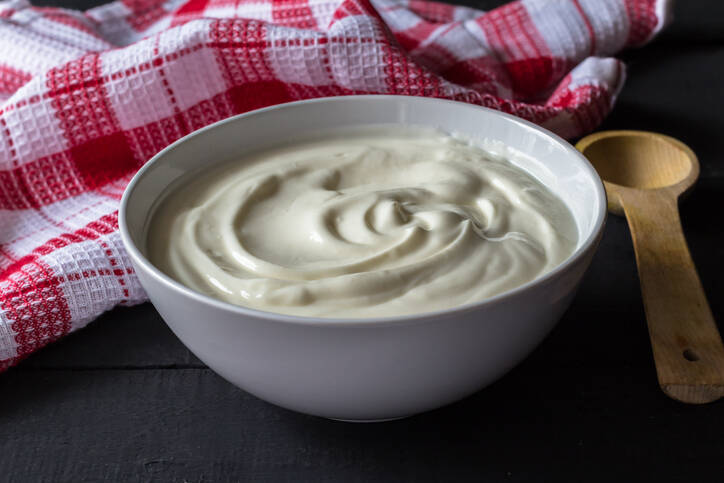How to make Greek yoghurt at home? Here is the recipe and its health benefits

Greek yoghurt is one of the surprising fitness foods, especially because of its nutritional value. It is also popular with gourmets because it goes well with a large number of dishes. Try preparing it at home with our recipe.
Article content
| Difficulty | Medium |
| Preparation | 25 minutes |
| Servings | approximately 5 servings |
Homemade and real Greek yogurt are higher in fat, but also higher in protein. Exercisers know how to handle it at the gym.
Its taste and thick consistency make it suitable for both sweet and savoury dishes. It is also good for cooking, making sauces and dressings.
It is originally made from sheep's milk, which is even richer in vitamins and contains twice as much fat.
The advantage of the fat and protein content of yoghurt is that it keeps us full for longer, so we won't be hungry again in a while. It is therefore also suitable for specific diets.
It is also exceptional because the protein accelerates the breakdown of fats in the body. There can be up to four times more of these in Greek yoghurt than in regular white yoghurt.
Greek yoghurt is also denser than regular white yoghurt.
Protein also helps to 'kick-start' the metabolism. In the right combination and when eaten regularly, it can help to reduce weight.
Greek yoghurt also provides the body with a supply of probiotics, which are very beneficial for gut health due to their content of essential bacteria.
Thanks to the probiotics, the intestinal microflora is improved. Regular consumption of Greek yoghurt can, for example, help prevent diarrhoea, bloating and constipation.
The external use of yoghurt is also very popular, for example in the form of masks or wraps. It has a beneficial effect on hair and skin.
The vitamins and minerals contained in Greek yoghurt include vitamins of the B group (B12 and B2), A, D, potassium, phosphorus and calcium.
Its composition also supports muscle and bone health. It is recommended as a prevention against osteoporosis or muscle flushes after exercise.
It also has a positive effect on blood pressure and the cardiovascular system. It helps to lower cholesterol levels.
Ingredients of Greek yoghurt
- 1 l of good quality domestic cow's (preferably sheep's) milk
- 150 ml white yoghurt (preferably with live cultures)
Preparation procedure
1. First, the milk should be almost boiled. The word 'almost' is important because it should not be boiled. A temperature of 80 to 85 °C at most is recommended.
2. When the milk is no longer boiling (max. 50 °C), add the yoghurt and stir well.
You can mix the yoghurt in another container with a few ladles of milk and then add it to the rest.
3. Let the mixture stand in a glass, wooden or ecoplastic container and let it cool slowly at room temperature.
4. Divide the mixture into two parts. Put one in the refrigerator and prepare the other in a sieve with a cloth. Of course, put a container underneath it into which the whey will drain.

5. After a few hours (3-4 hours is enough), you can mix the two yogurts and you're done.
Yoghurt will also form without this separation of the mixture if you let it cool without straining. However, it is better and thicker with this combination.
It is excellent in typical Greek tzatziki, in various spreads and sauces. It will also please gourmets when used in cream cakes and pies.
It can also be eaten alone with cereals or fruit.
Enjoy!
Don't forget to try our other healthy recipes:










